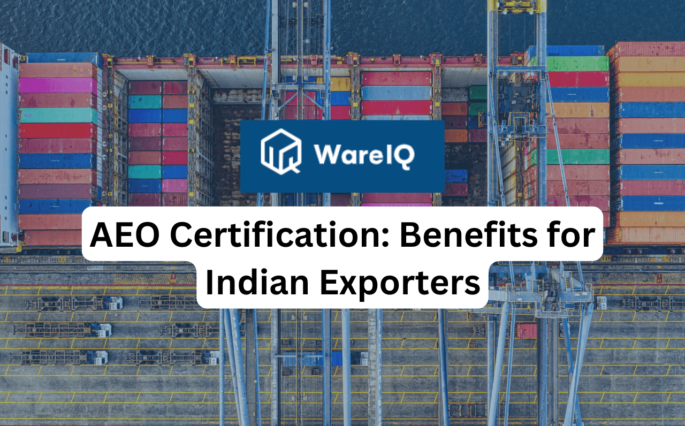Import Export Code Registration : Your Gateway to Global Trade


All businesses in India with cross-border transactions must get identification from the Indian government for regulatory compliance and legal processes. It ensures that they abide by respective regulations and laws related to foreign trade. That is what Import Export Code Registration /licence is all about. It is a 10-digit unique identity number issued by the Director General of Foreign Trade (DGFT) India to authorise a business for cross-border imports and exports.
Without an IEC code, customs clearance is impossible, and foreign trade is prohibited. Therefore, it is crucial for new businesses aspiring to global markets to register for import-export codes in India. This blog post provides relevant details.
Eligibility for Import Export Code Registration
The IEC certificate in full form is the Import Export Code Certificate. Any business that is proprietorship, partnership, limited liability partnership, trust, limited company, hindu society or undivided families can apply for DGFT IEC code.
Businesses or individuals involved in importing or exporting goods as part of their business activities must obtain a DGFT IEC license number.
In the case of services, if service providers have clients abroad and they’re availing the benefits of Foreign Trade Policy, getting an IEC code is mandatory.
IEC Code Exemption
- An IEC code is not required for imports and exports related to personal purposes.
- Cross-border transactions performed by Indian government departments, ministries and selected charitable institutions do not need an IEC licence.
- Some traders with GST registration do not need IEC.
- Importing gifts and samples within prescribed limits does not call for an IEC code.
- If the import is part of the service provision, then an import-export certificate is not necessary, e.g., for software imports.
- Importing from SEZ (Special Economic Zones) to DTA (Domestic Tariff Areas) within a country is exempt from IEC registration.
Documents Required for IEC Code Registration
- PAN card of the business holding.
- Address proof of the applicant/business holding.
- Business registration/certificate number.
- Bank account of business entity with a Cancelled cheque.
- Passport-size photograph of the applicant.
- Identify proof of the applicant (Aadhaar/Voter ID Card/Passport).
Import Export Code Registration Procedure
DGFT import export code registration online can be done by submitting necessary documents. To apply for IEC code, follow the below steps.
Step 1: Visit the government portal of DGFT– dgft.gov.in.

Step 2: Go to “Register for your IEC” section and click on “Apply for IEC”

Step 3: Select the registration tab for a fresh application. Enter the necessary details to complete registration. Already registered users can login directly.

- Input OTPs received by email and phone number to validate.
- After successful verification, a temporary password will be sent. Use that for the first time DGFT login and change it afterwards.
- The IEC code registration form becomes available. Start filling it out. It usually asks about the type of business (proprietor/partner/director/Karta/managing trustee), bank information, and other details.
- Submit the required documents as mentioned above.
- Fill the “ANF2A” (Aayat Niryat Form 2A) form.
- Pay applicable DGFT India fees.
After the application form is successfully completed, it will be sent to the DGFT for verification of documents and details.
Based on the verification outcome, the application for DGFT IEC code registration may be approved or rejected. In case of approval, an IEC code is issued. For online applications, the DGFT IEC code will be issued through e-IEC. An email will be sent about its availability on the registered DGFT account.
Timeline
The DGFT India, in association with the income tax department, completes real-time verification of the IEC application. Upon approval, an IEC code certificate is typically issued within a day.
Import Export Code Registration Fees in India
The fees for Import Export Code Registration in India are very nominal. The IEC code registration is complete only after the payment of fees. Applicants can make the payment through Credit/Debit cards, net banking, and UPI.
Import Export Code Registration India Fees
| Type | Fee |
| IEC Code Registration Fees | ₹500 |
| Professional Fees | ₹999 |
| Filing at DGFT | Nil |
| Aayaat Niryaat Form 2A | Nil |
| Total | ₹1499 |
DGFT IEC Code Renewal
The import-export certificate is forever valid. However, annual updates are necessary to keep the code activated.
Every year, businesses must consider their IEC code renewal between April and June. At other times, additional fees are applicable. Since 2021, the Indian government has made the renewal mandatory after import-export code registration with DGFT. Otherwise, such businesses will be classified as “Deactivated” for foreign trade. They must follow the required procedures to “reactivate.”
While the procedure remains mostly the same for DGFT IEC renewal, the previous IEC Code licence number may be required.
Suggested – IMDG Code: What It Is and Why It’s Vital for Dangerous Goods
Benefits of IEC Code License
- The IEC license is mandatory to perform imports and exports through customs.
- The Indian government offers various benefits to businesses with the IEC code, such as tax benefits, incentive schemes, etc.
- Businesses can enter into global markets to showcase and sell their products.
- Increased trust from global customers, suppliers, banks, etc., due to certification.
- The unique IEC code allows tracking of all cross-border transactions, eliminating the room for fraud.
- Businesses with IEC registration automatically become compliant with various import-export regulations, including regular updates.
- Because of access to various opportunities, businesses with IEC will also offer a good customer experience.
The Use of IEC Code in Exports
The import-export certificate must be produced along with the following documents for gaining clearance for cross-border exports.
Bill of Lading: A document from the shipping company to track and transfer ownership of goods.
Commercial Invoice: Lists exported goods, quantity, price, and payment terms, issued by the exporter.
Packing List: Info on shipment contents and quantities, issued by the exporter.
Customs Declaration: Submitted to customs, declares imported/exported goods, their value, and purpose.
Related Read : What is Goods Received Note (GRN)
Conclusion
Every business holding in India intending to perform foreign trade must get an IEC code from the DGFT. It is not only mandatory for regulatory compliance and customs clearance, but establishes them as a trustworthy business in the international markets and gains a global customer base. As discussed above, imports and exports for personal purposes do not need IEC. However, when the business purpose is involved, the import-export certificate is mandatory, irrespective of the scale of the business.
Learn How to Export from India
Frequently Asked Questions
Can I cancel DGFT IEC code for my business?
IEC holders can cancel their Import-Export Code by filing an online surrender request on the DGFT website, submitting documents, and completing the application to revoke future export/import transactions.
How to download an IEC certificate?
To download the IEC certificate PDF, log in to the DGFT website. Navigate to Services > IEC > Manage IEC, verify details, and click ‘Print IEC’.
Is IEC license enough to perform exports from India?
While the Import-Export Code (IEC) is a crucial document for exporting from India, it is not the only requirement. Depending on the product category, shipping mode, destination country, and other factors, exporters must obtain additional mandatory documents and licenses.
Is the IEC certificate valid throughout India?
The IEC (Import-Export Code) is a unique identification number applicable across India for your import-export business.








